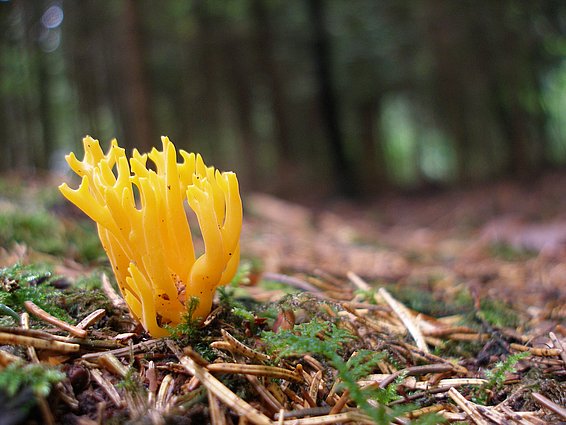
Besides plants and animals, fungi form their own kingdom with a huge variety of species and forms. There are about 100'000 described species worldwide and a multiple of still undescribed species. Also in Switzerland, they belong to the species-richest groups with over 9000 known species. Fungi occur in almost all habitats and are essential for a functioning ecosystem. They play a central role, for example, (i) as decomposers of plant material for the carbon and nutrient cycle, (ii) as mycorrhiza symbionts of plants for their more efficient uptake of nutrients and water, (iii) as mutualistic endophytes of internal plant tissues (e.g. to ward off pathogens), (iv) as a food basis for various mammals, insects and orchids, (v) as creators of microhabitats such as tree cavities and (vi) as plant parasites paradoxically for a healthy and diverse ecosystem. Invasive fungi, so-called neomycetes, such as the ash dieback pathogen Hymenoscyphus fraxineus, are able to destabilize entire ecosystems. A similar situation could occur if mycorrhizal fungi of trees were to decline dramatically or if the wood-decomposing fungi were to disappear. In addition, fungi also have a direct culinary and medical use for mankind. The substances contained in fungi offer an almost inexhaustible potential for the development of new antibiotics and antimycotics (e.g. the antibiotic Plectasin of Pseudoplectania nigrella).
Since fungi usually have very specific habitat requirements, they can be used in nature conservation as important indicators of desirable and undesirable changes in an ecosystem. For example, the genus Hygrocybe and other grassland species indicate extensively managed, relatively long-term undisturbed meadows. Certain saproxylic fungi, on the other hand, are indicators of late stages of forest development. Unfortunately, the potential of fungi as indicators is far from exhausted. At the same time, the diversity of habitats and ecological niches occupied by fungi suggests that the existing network of nature reserves is likely not sufficient to conserve all fungi.
